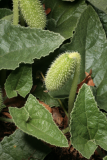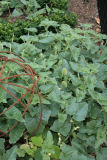Additional notes (click to expand)
Medicinal
Cancer; Cathartic; Dropsy; Nephritis; Purgative. Restricted.
Germplasm Resources Information Network (GRIN) at www.ars-grin.gov/cgi-bin/npgs/html/tax_search.pl
Culpeper: ‘Cucumers, or (if you will) cowcumbers, cool the stomach and are good against ulcers in the bladder.’
Culpeper, Nicholas. (1650). A Physical Directory . London, Peter Cole.
The cucumber of today’s salads is Cucumis sativus.
Restricted medicinal.
The medicinal properties and uses of EE have been well known since the Assyrian Times
(Campbell, 1949). Several sources have indicated that the fruit of E. elaterium is the
source of the important medical product«_____ __» (elaterion), "Elatir", including:
Dioscorides (Materia Medica 4:150 as Sikysagrios – ____ __ __; Gunther, 1959);
Theophrastus (Historia Plantarum: II: 476 asSikyos o agrios – _____ _ __ __); Galenus
Med. (De simplicium medicamentorum temperamentis ac facultatibus libri xi as Sikyos
agrios - _____ __ __) and Pliny (as "elaterium", Natural History, XX, 3. 85). Its properties and uses include: analgesic, laxative, and abortive; treatment for chronic sinusitis, liver cirrhosis, rheumatism, and hemorrhoids; treatment for jaundice, diuretic, emetic, nasal drops, potent cathartic and anti-inflammatory agent (see Latté, 2009 for a recent review).
The Journal of Ethnobiology and Traditional Medicine. Photon 119 (2013) 515-537 https://sites.google.com/site/photonfoundationorganization/home/the-journal-of-ethnobiology-and-traditional-medicine
Nomenclature
Culpeper: ‘Cucumers, or (if you will) cowcumbers, cool the stomach and are good against ulcers in the bladder.’
This plant has at least 292 folk and popular names in European and Middle Eastern languages. They reflect its unusual appearance, the peculiar method of seed dispersal, medicinal uses, role in magic and witchcraft and bitter taste. In some countries they also represent terms of abuse often by reference to ‘lowly animals’ and disgusting habits.
The large number of names shows the influence of cultural and societal factors in the formation of popular names and exemplify the problems of identification faced by ethnobotanists and historians in identifying particular species from past records.
The Journal of Ethnobiology and Traditional Medicine. Photon 119 (2013) 515-537 https://sites.google.com/site/photonfoundationorganization/home/the-journal-of-ethnobiology-and-traditional-medicine
Other use
Ecballium elaterium (L.)A.Rich. Benincaseae Squirting cucumber - when ripe, the seed explodes from its case, squirting some distance. Distribution: Asia, Europe and N. Africa. Contain cucurbitacins which are very bitter, cytotoxic and poisonous. A restricted herbal product, only to be supplied in registered pharmacies or under the supervision of a pharmacist (UK Medicines and Healthcare Products Regulatory Agency (MHRA)).
Oakeley, Dr. Henry F. (2013). Wellcome Library notes.
link
Toxicity
Contains the resin elaterin, a powerful purgative; its sale is restricted in the UK to registered pharmacies.
Oakeley, Dr. H. F. . (2013). The Gardens of the Pharmacopoeia Londinensis.
link
Poison.
Germplasm Resources Information Network (GRIN) at www.ars-grin.gov/cgi-bin/npgs/html/tax_search.pl
Toxicity due to cucurbitacins.
Professor Anthony Dayan, 2021
The plant, especially its fruit, is poisonous (Raikhlin et al., 2000; Vlachos et
al., 1994; Eken et al., 2008), containing cucurbitacin, a poisonous triterpene (Attard
and Scicluna-Spiteri, 2003
The Journal of Ethnobiology and Traditional Medicine. Photon 119 (2013) 515-537 https://sites.google.com/site/photonfoundationorganization/home/the-journal-of-ethnobiology-and-traditional-medicine
Toxic due to presence of triterpene derivatives that are mucosal irritants and cause violent purgation.
Professor Anthony Dayan, 2022
Geographical distribution
- Africa, Northern Africa, Algeria
- Africa, Northern Africa, Libya
- Africa, Northern Africa, Morocco
- Africa, Northern Africa, Tunisia
- Asia-Temperate, Caucasus, North Caucasus
- Asia-Temperate, Caucasus, Transcaucasus
- Asia-Temperate, Western Asia, Cyprus
- Asia-Temperate, Western Asia, Iran
- Asia-Temperate, Western Asia, Iraq
- Asia-Temperate, Western Asia, Jordan
- Asia-Temperate, Western Asia, Lebanon-Syria
- Asia-Temperate, Western Asia, Turkey
- Europe, Eastern Europe, Baltic States
- Europe, Eastern Europe, Ukraine
- Europe, Southeastern Europe, Albania
- Europe, Southeastern Europe, Bulgaria
- Europe, Southeastern Europe, Greece
- Europe, Southeastern Europe, Italy
- Europe, Southeastern Europe, Romania
- Europe, Southeastern Europe, Yugoslavia
- Europe, Southwestern Europe, France
- Europe, Southwestern Europe, Portugal
- Europe, Southwestern Europe, Spain
Ecballium elaterium ( L. ) A.Rich.
Family: CUCURBITACEAEGenus: Ecballium
Species: elaterium ( L. ) A.Rich.
Common names: Squirting Cucumber
Pharmacopoeia Londinensis name: Cucumis asininus
Distribution summary: Eurasia
Habit: Perennial
Hardiness: H2 - Tender; cool or frost-free greenhouse
Habitat: Scrub and waste land
Garden status: Currently grown
Garden location: Pharmacopoeia Londinensis 1618 'Fruit' (HSE 4)
Flowering months: June, July, August
Reason for growing: Medicinal, toxic
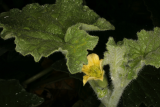
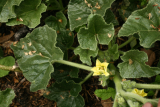
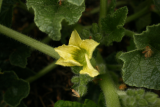
.JPG)
.JPG)
.JPG)
.JPG)
.JPG)
.JPG)
.JPG)

.JPG)
.JPG)
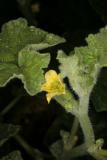
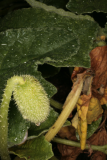

.JPG)
.JPG)
.JPG)
.JPG)
